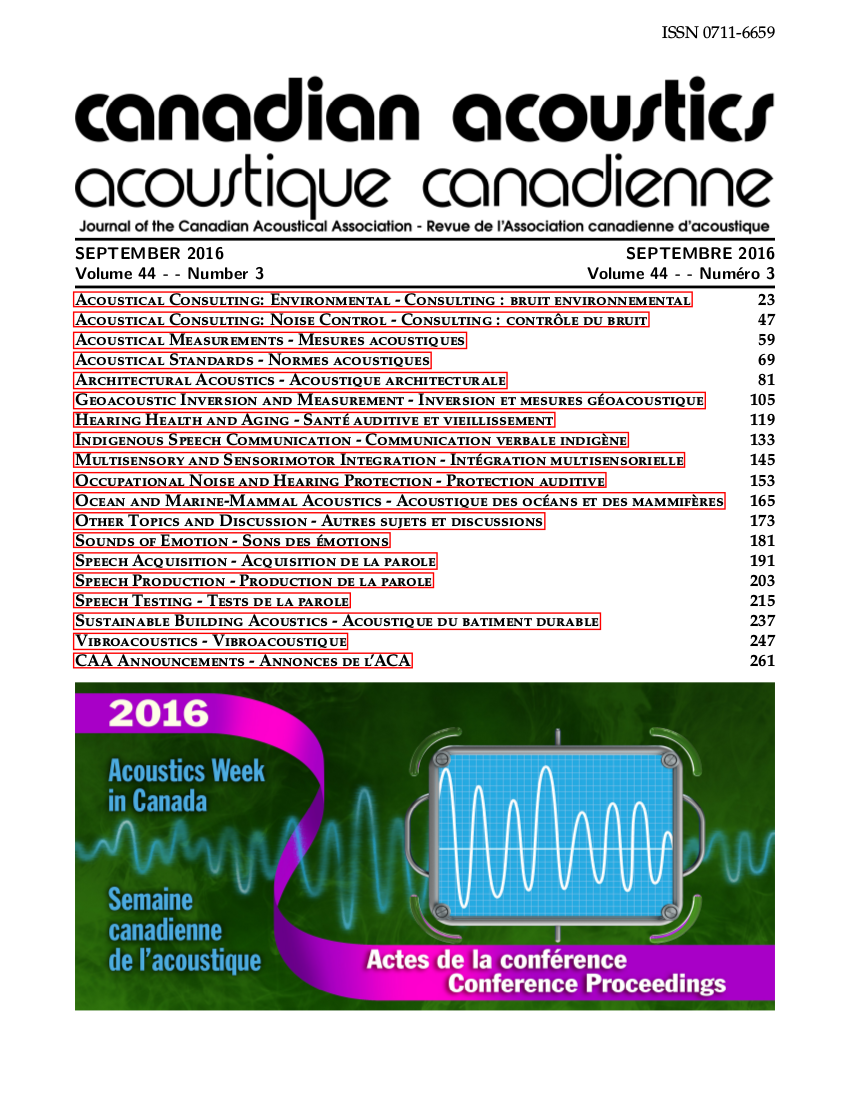ACOUSTICAL DESIGN FOR 21ST CENTURY LEARNING
Abstract
Acoustical Design for 21st Century Learning
Paul E Marks and Katrina Scherebnyj 1
1BKL Consultants Ltd., #308 - 1200 Lynn Valley Road, North Vancouver, BC, Canada, V7J 2A2.
ABSTRACT
The design of new schools and buildings used for education requires acoustical conditions that not only achieve the objective design standards of the School District but also reflect the needs of contemporary teaching methods. Increasingly spaces within schools have to be adaptable to both group and interactive learning as well as providing conditions that are sufficiently adequate for more traditional teaching techniques.
The demands for acoustical conditions that allow for a high degree of learning and understanding in open-plan classrooms, commons or multi-purpose spaces, but which also prevent undue noise intrusion, results in challenges to the modern day acoustical engineer during both the architectural design and construction stages.
The paper will examine the key acoustical drivers for modern educational needs and the constraints faced by designers and acousticians. It will also consider the main design requirements for excellent acoustical conditions in learning spaces and will discuss and evaluate practical examples of design treatments and measures that have been used in schools to provide such conditions.
Additional Files
Published
How to Cite
Issue
Section
License
Author Licensing Addendum
This Licensing Addendum ("Addendum") is entered into between the undersigned Author(s) and Canadian Acoustics journal published by the Canadian Acoustical Association (hereinafter referred to as the "Publisher"). The Author(s) and the Publisher agree as follows:
-
Retained Rights: The Author(s) retain(s) the following rights:
- The right to reproduce, distribute, and publicly display the Work on the Author's personal website or the website of the Author's institution.
- The right to use the Work in the Author's teaching activities and presentations.
- The right to include the Work in a compilation for the Author's personal use, not for sale.
-
Grant of License: The Author(s) grant(s) to the Publisher a worldwide exclusive license to publish, reproduce, distribute, and display the Work in Canadian Acoustics and any other formats and media deemed appropriate by the Publisher.
-
Attribution: The Publisher agrees to include proper attribution to the Author(s) in all publications and reproductions of the Work.
-
No Conflict: This Addendum is intended to be in harmony with, and not in conflict with, the terms and conditions of the original agreement entered into between the Author(s) and the Publisher.
-
Copyright Clause: Copyright on articles is held by the Author(s). The corresponding Author has the right to grant on behalf of all Authors and does grant on behalf of all Authors, a worldwide exclusive license to the Publisher and its licensees in perpetuity, in all forms, formats, and media (whether known now or created in the future), including but not limited to the rights to publish, reproduce, distribute, display, store, translate, create adaptations, reprints, include within collections, and create summaries, extracts, and/or abstracts of the Contribution.


